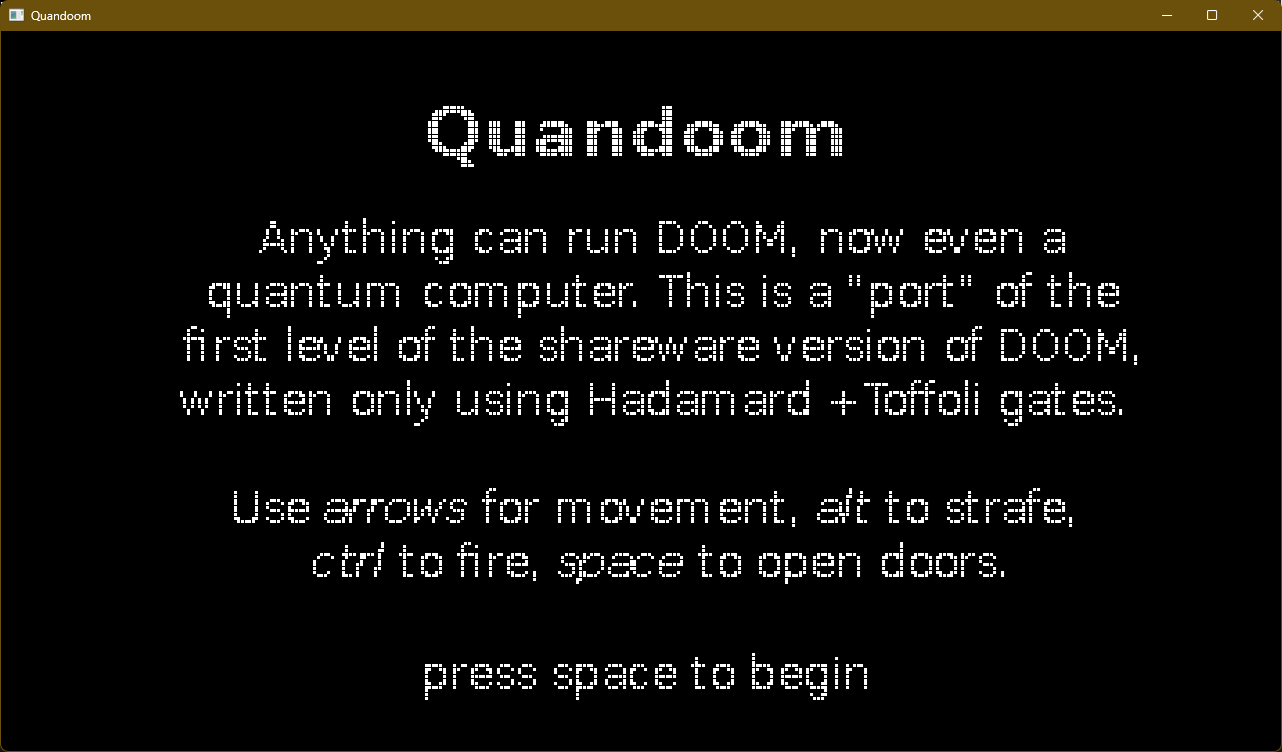Key Takeaways
- Porting DOOM to quantum computers requires converting logic to qubits, but current quantum specs are insufficient.
- Quandoom runs on a classical computer via a simulator, producing a basic wireframe version of DOOM at low performance.
- While a quantum DOOM port may seem like a joke, it demonstrates potential for quantum computing in various industries.
It’s a meme that DOOM, the classic 90s shooter, has been ported to everything from pregnancy tests to McDonalds kiosk screens, but now we have Quandoom: a version of DOOM designed to run on quantum computer hardware. Except it can’t yet. It’s complicated.
What Does Porting to a Quantum Computer Even Mean?
Porting DOOM to a quantum computer means converting the logic of its code to run on “qubits” or quantum bits. The fundamental element of quantum computers, which relies on quantum effects to let each qubit exist in multiple states at once. Something known as being in “superposition.”
Just like traditional computers, quantum computers have their own programming languages, and in the case of Quandoom, developer Luke Mortimer, a PhD student in quantum information, used QASM: Quantum Assembly Language.
The Quantum Specs Don’t Exist Yet
The thing is, Quandoom requires over 70,000 qubits and millions of quantum gates to work. There simply isn’t a quantum computer in existence with anywhere near the specifications required. Instead, Quandoom is run on a classical computer through a quantum simulator, mimicking what a quantum computer would do. The result? A simplified wireframe version of the game running at 10-20 frames per second on a modern laptop.
I tried it on my 24-core, 32-thread Intel i9 13900HX, and that was indeed more or less the performance I got, from such an incredibly stripped-down version of a DOOM level. It looks like something from the very early days of “3D’ graphics, the sort of wireframe stuff running on a Commodore 64. A game like the original Elite.
Simulating quantum processes on classical machines is possible but extremely resource-intensive. It’s a bit like trying to play a modern AAA game on a computer from the ’90s—possible, but you’ll be getting minutes per frame, rather than frames per second. That’s why the simulation runs slowly and lacks many of the visual bells and whistles of the original DOOM.
It Seems Like a Joke, but This Matters
At first glance, DOOM on a quantum computer seems like a fun gimmick—after all, it’s the game people get to run on everything from fridges to ATMs. But this port has deeper significance. Gaming has always pushed the limits of computing technology, and this is no exception. By experimenting with quantum computing in a gaming context, researchers are exploring the boundaries of what quantum hardware could eventually do.
It shows that, theoretically, you can get complex traditional software like DOOM to run on this exotic hardware. All the elements you need are there to form just about any logical operation.
The fact that a quantum version of DOOM can be simulated on classical hardware, even in a stripped-down form, is a small but exciting step towards a future where quantum computing might revolutionize entire industries. Of course, according to the creator “There is no quantum advantage, it’s just a classical algorithm written in a format compatible with a quantum computer.” However, I think that’s underselling the significance of Quandoom as a proof of concept exercise.
How to Play Quandoom Today
While creating Quandoom is a massive, challenging achievement, trying it for yourself is pretty easy, you can find instructions for Linux on the GitHub page, but for Windows all you have to do is download and unzip the Quandoom file and then drag “quandoom.qasm” onto “simulator.exe.”
It will take a while for the demo to start, since it unpacks to about 6GB of data in RAM. You can open up the Task Manager and watch simulator.exe balloon up to that size in real time.
Once the game demo has loaded, just follow the instructions and see if you can get to the end of this single level. Since you can’t see very far, it’s a little tricky, but if you’ve played classic DOOM as much as I have, you already know where everything is. It’s a fun little experiment, and also an important meeting of computer history, and computing’s future.






